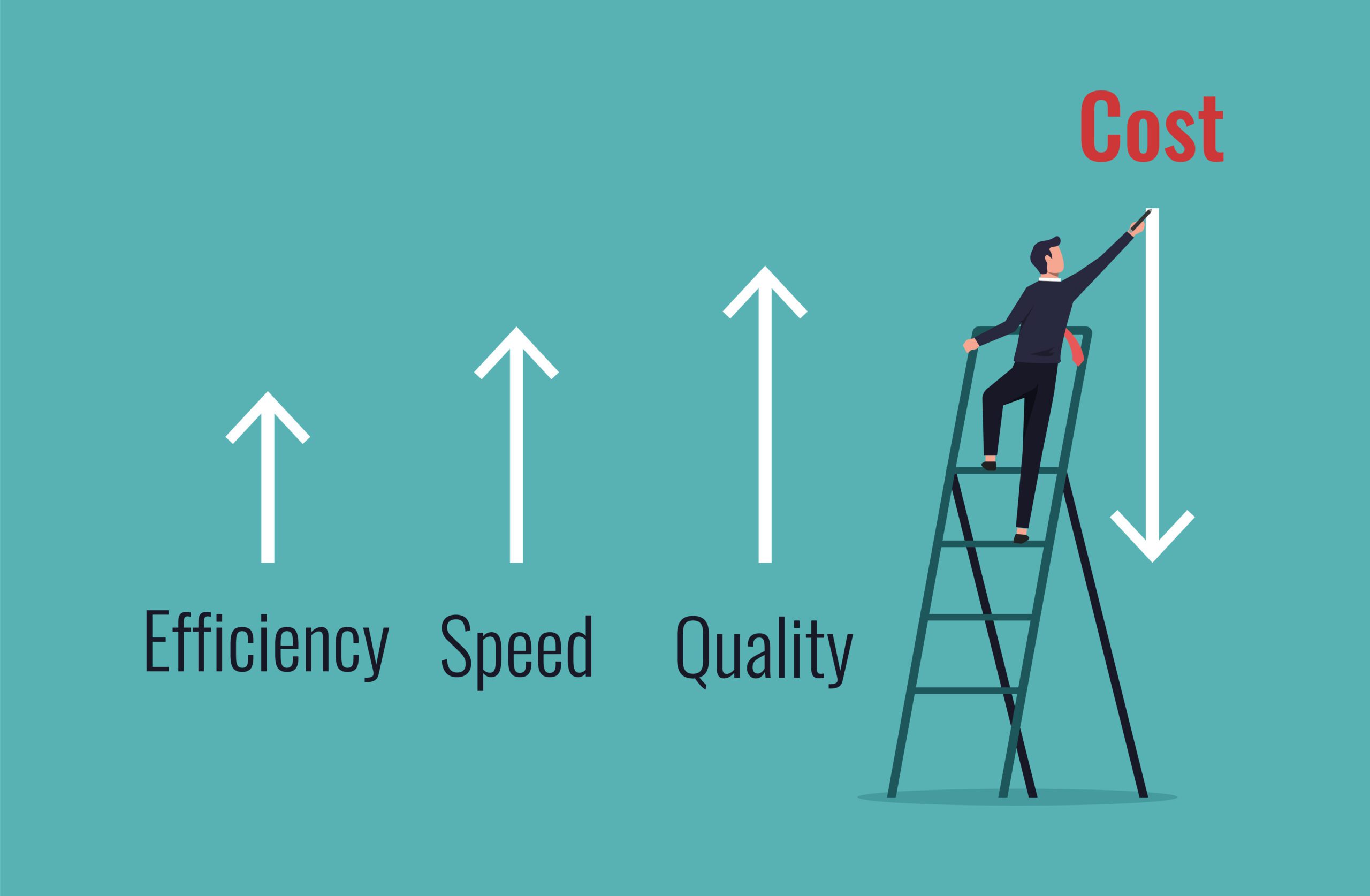In 2022, HealthEdge once again commissioned an independent survey of health insurance executives to capture and monitor perspectives regarding current challenges and priorities. There were over 300 responses received – from Directors and above in a variety of types and sizes of health plans.
We’d like to focus on one of the reported Top Challenges Facing Health Plan Executives – operational efficiencies. The challenge of operational efficiencies came in second place and jumped 33% from 2021 to 2022, from 31% to 41% of respondents. To satisfy your curiosity, ‘managing costs’ came in first place, and ‘member satisfaction’ third in the 2022 study. In 2021, operational efficiencies ranked sixth. Member satisfaction and managing costs tied for third in 2021 behind ‘competitive pressure’ and ‘IT/business alignment’ (fourth and fifth in 2022, respectively).
When we began discussing and evaluating this internally, the comment came up about the pent-up demand for care as some consumers stopped seeking care during the COVID years of 2020 and 2021. It’s a complex dynamic, as the varying impact on payers and providers differ and could also be positive or negative. Capitated health plan members seeking less care might be good for the provider financially, albeit temporarily. The influx of care may also have a positive or negative impact for payors and providers. The increase in unemployment caused an increase in uncompensated care – but also an increase in Medicaid membership. It is anything but simple and there are many factors to consider – type of health plan, type of patient, type of reimbursement, conditions, diagnoses, contracts, etc.
Managing costs and operational efficiencies go hand-in-hand, so it makes sense that they both increased significantly in the responses for top challenges. With the “great resignation”, the need to become more efficient is at play in all types of organizations – and is directly related to operational efficiency.
We’d like to focus on three potential areas to consider related to operational efficiency – auto-adjudication and first pass rate, digital transformation and return on investment (ROI), and staffing.
Auto-adjudication and first pass rate
Most health plans continue to focus on improvements to auto adjudication rate, a key indicator for improving operational efficiency. The obvious benefit here is the assumption that fewer claims will be touched by a human. However, first pass rate is often overlooked or not measured, and is equally, if not more important. For those that are unclear on the difference – the auto-adjudication rate is most often measured by simply calculating the percentage of claims successfully processed without manual intervention. Without more complex calculations, what is sometimes overlooked are claims that had previously suspended – maybe even more than once – and are now processed a subsequent time successfully – then counted as having auto-adjudicated, skewing the results. Some of those claims were actually touched by a human, sometimes more than once. First pass rate calculates those claims that were never suspended and successfully processed the first time. However, both measures help with evaluating operational efficiency.
Digital transformation and return on investment (ROI)
The buzz words “digital transformation” have been top of mind for the last several years, and remain a priority for improving operational efficiency. What IS digital transformation? Each organization must carefully define what this means internally, but in general, it is increasing and improving the efficient use of technology. There is a cost to increasing the use of technology. There is certainly a ROI to come, and it’s critical to not only anticipate the ROI, but to continue to measure it. The measurement can help to justify future improvements to and investments in technology once ROI calculation and measurement becomes routine and is demonstrated. The simple fact is that money must be spent to eventually save money – just like how converting a home to solar power includes a significant initial investment that pays off over time.
Software vendors are being asked more than ever to justify the cost of technology and demonstrate (in advance) the ROI. In some cases, ROI and/or performance guarantees are being built into software licensing agreements. The software industry should be positioned to explain and develop the ability to measure and commit to stated ROI for purchasers of their technology solutions.
Staffing
Operational efficiency related to staffing also increased in importance as most organizations are now trying to do more with fewer resources. Health plans are trying to become more efficient through higher automation of manual processes where applicable – and somehow enabling a corresponding increase in human efficiency. The so-called great resignation has health plans understaffed and has increased the urgency of this shift. Some did not anticipate the increase in staff productivity while working remotely. While this is not true 100% of the time and not for 100% of employees, it has been true more often than not. Interestingly, in many cases, working remotely improved work/life balance – and consequently improved productivity. This turned out to be operationally efficient.
Recruitment and retention are more critical than ever. Alternate staffing methods have become important to defend against this phenomenon. This includes some tried and true options such as 9/80 or 4/40 work schedules, part-time and shift work, full- or part-time remote work, additional paid holidays and/or time off, and other common staffing solutions. In addition, internship programs are increasing, as is the untapped value of the intern. While many internship programs were and remain focused on the summer, many programs are now year-round. Many colleges and universities offer cooperative education (or co-op) programs – where paid full- or part-time jobs are taken for credit during what would be the typical school term (or longer). Internships are being made available to others, including recent graduates or master’s program graduates.
While the need for operational efficiency may increase or decrease in any given year, it is a continual challenge that can be achieved in many ways. We hope we’ve offered just a glimpse into a few potential contributors.
Read the full report here: Annual Market Survey Reveals What 300+ Health Plan Leaders are Thinking






